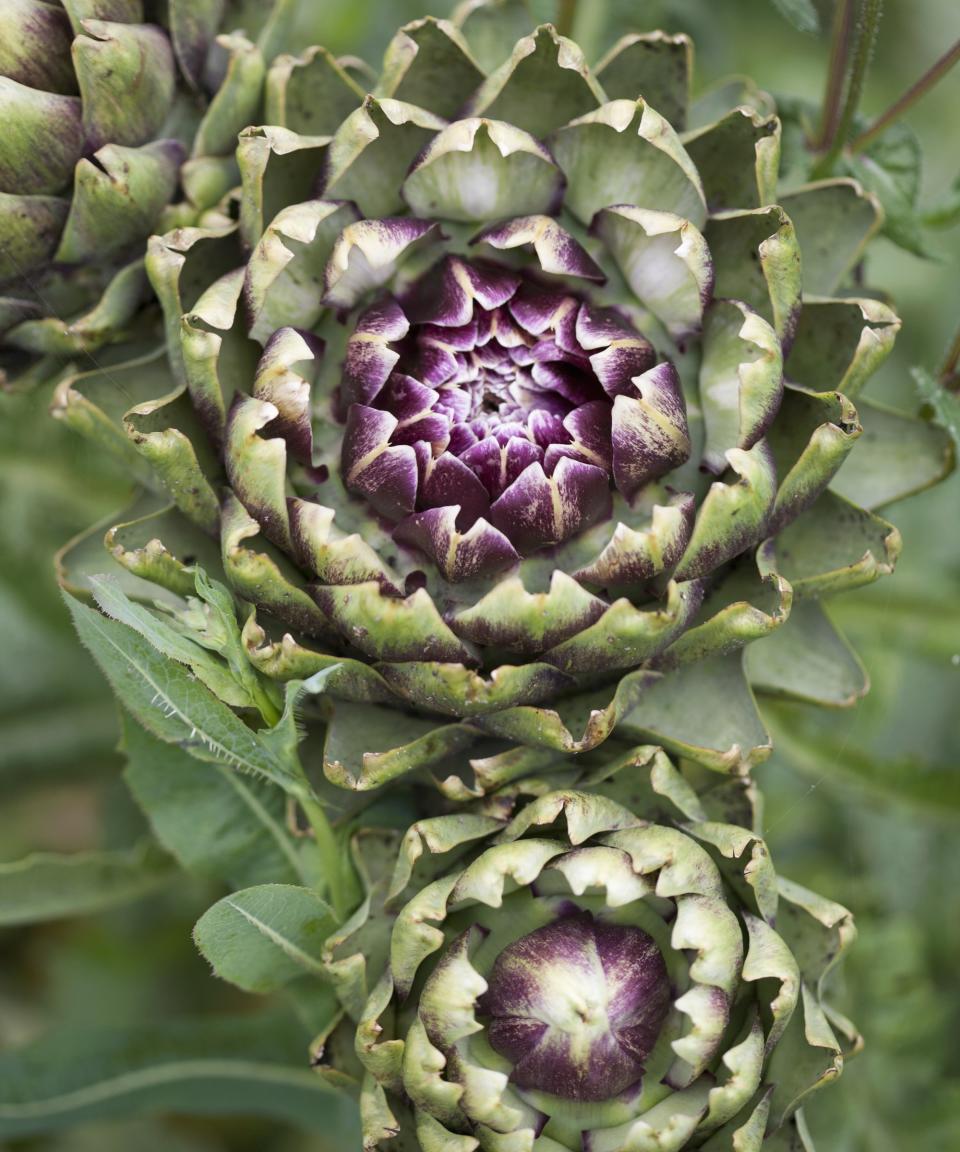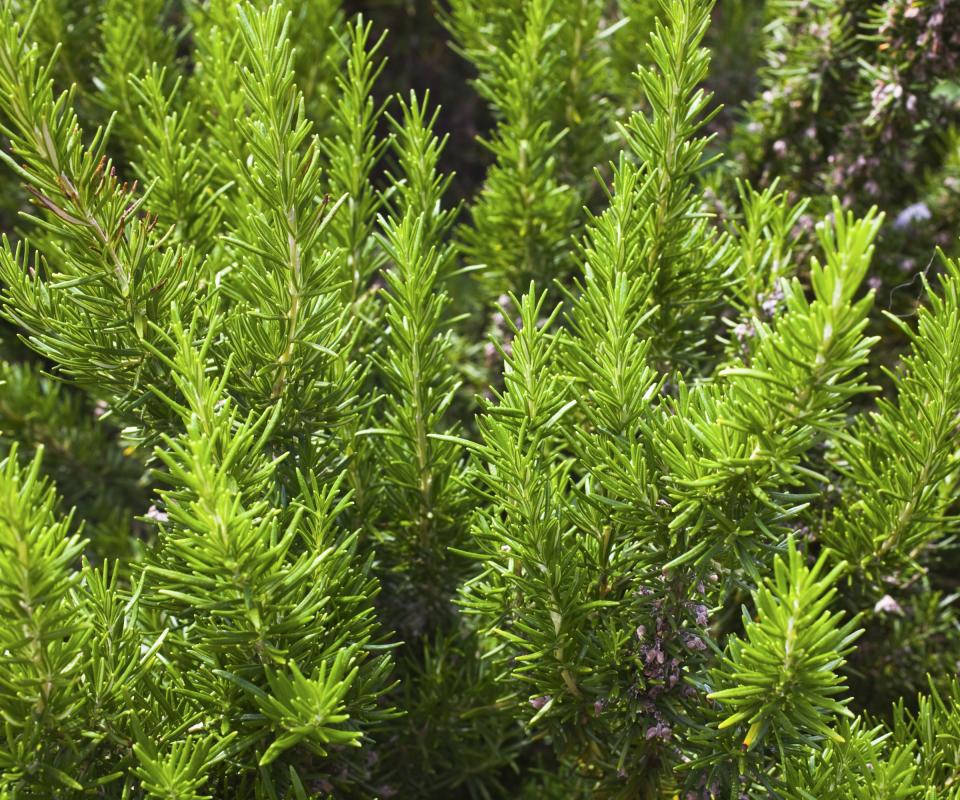What are edimentals? Discover all about these beautiful and tasty plants and how to add them to a space

Edimentals have been around for centuries yet are now rapidly rising in popularity again and the trend looks set to continue. But what exactly are edimentals and how should you start adding these into your backyards?
Edimentals are dual-purpose plants that are both aesthetically pleasing and edible. And the list of edimentals is a long and exhaustive one, opening up a world of possibilities to have an attractive and also productive space.
There are edible flowers and plants for gardens of any size and they can also grow very happily in containers. Edimentals come in a plethora of colors, shapes, and sizes, but can all coexist in a space. Often it is herbs that provide the perfect plants to start dipping your toes into the world of edimentals, while there may already be more edible plants in your garden than you know.

What are edimentals?
Edimentals both look beautiful and also provide a yield of flowers, fruits, or leaves. The list of edimentals that can be grown as part of backyard ideas is long and varied, with the types of edible plants you can integrate into any garden designs ranging all the way from annual plants to trees. The term edimentals covers many edible plants that are perennial, making them stand out from the common annual life cycle of growing plants for food.
It may be surprising to discover how many common ornamental plants are edible, including types of dahlias, roses, and sunflowers, and the potential uses they can have. Many perennials that are already common in landscape designs can provide a harvest, while plants that are normally grown as edibles can also be used in beds and borders for their aesthetic appeal too, such as artichokes, fruit bushes, or perennial vegetables.
Nikhil Arora, co-founder of Back to the Roots, urges gardeners to experiment and ‘have fun’ with edimentals as many of them are ‘so easy to grow’. He adds: ‘Edimentals are awesome to grow because they not only help beautify your garden, but they also are incredibly nutritious.
‘Think of them as a wellness boost – natural beauty to calm and de-stress your mind, and nutrition to help fortify your body.’

Why use edimentals?
Edimentals offer a wealth of benefits and they should be seen as ‘win-win’ additions to your garden. You get to enjoy the plants for their aesthetic beauty, but also get a delicious homegrown harvest that can be used for so many things. The pickings from edimentals can be used in cooking, baking, raw in salads or as a garnish, or even in drinks such as teas or cocktails.
As well as boosting the garden, they can also help the gardener. Lindsey Chastain, a homesteader and founder of The Waddle and Cluck, claims that growing edimentals can help to foster a healthier lifestyle, saying: ‘Having ready access to a variety of fresh, organic fruits, vegetables, and herbs can encourage healthier eating habits. Moreover, gardening itself is a therapeutic and rewarding activity, offering both physical and mental health benefits.’
Edimentals can be beautifully integrated with other ornamental plants such as in flower beds and borders, rather than having to be confined to a dedicated vegetable garden, kitchen garden, or herb garden. They can fit into small spaces and are even suitable for container gardening ideas.
Many popular edimentals are very low-maintenance perennial plants that can provide beauty and food for many years. Using perennial edimentals reduces the need to sow annuals each spring and dedicate time to nurturing young and delicate plants, as well as the cost of buying seeds year after year. In addition, many edimentals can be quite drought-tolerant plants once they are established and also great at attracting wildlife and many beneficial insects into a garden.
Adding them to your backyard beds allows you to benefit from the pollinators they bring in, while the simple act of foraging around the garden picking edible flowers, leaves, or flowers can be a joyous one.

How to start with edimentals
There is a huge range to choose from and it is important to pick the right plants for your garden, taking into account the size, sunlight, soil type, and climate. Also, think about what you would do with the edibles and choose things to grow that you like eating and using.
For beginners, it is best to start small and pick edimentals that are easy to grow and maintain. Gardening expert and influencer Arthur Parkinson highlight herbs as a great way that people can start to add edimentals into a space, as they are perennial, easy to grow, drought tolerant, and rich in nectar and pollen for essential pollinating insects.
He says: ‘For people that don’t necessarily garden, easy edible plants can act as a connector between the house and garden. Herbs are one of my favorite edimentals as you don’t need a large amount of space for them to thrive, something as small as a window box will still see them flourish if tended in the right way.
‘Herbs provide scent too and can add huge flavor to meals and drinks throughout the year. The benefit of homegrown herbs is they are free of chemicals and have richer flavors due to them being picked within minutes of being served up on a plate.'
Arthur picks four of his favorite aromatic herbs that would be great starter plants for anyone wanting to add more edimentals to their backyard space.
Rosemary is a lovely evergreen choice that can be allowed to grow quite big as a statement plant or even trimmed into a bushy hedge. It has blue flowers that are attractive to bees. For growing rosemary in large pots choose ‘Miss Jessop’s Upright’ and ‘Tuscan Blue’ but the best one for a window box is the trailing variety ‘Prostratus’, available to buy at Burpee
Thymes are hard to beat for billowing window boxes of rich perfume. They cope well with minimum attention and when in flower they are especially loved by honey bees, so you’ll be helping out local beekeepers too. For good kitchen varieties choose lemon thyme, available at Burpee, and fragrantissimus (also called orange scented thyme)
Mints are wonderful for adding to cocktails, such as the dainty strawberry mint, whilst the black peppermint is one of the best for refreshing teas. Eau de Cologne is incredibly soothing when a few sprigs are added to the running water of a hot bath, the perfume is beautiful
Lavender is beloved and will thrive in the sun and in well-draining soil. Just a few plants can be dotted to grow as statements through cottage garden-like planting schemes, or they can be planted as hedges. Arguably the best variety is the well-known ‘Hidcote’ but research has found that the Gros Bleu variety is the most loved by bees. Make lavender bags from the spent flowers, deadheading lavender when the flowers fade. You can buy Lavender 'Hidcote' plants from Walmart

Dr Trevor George designed and owns The Nutrition Garden in West Surrey, UK, which is a garden that showcases a wide variety of edible plants. He recommends that gardeners start looking around their own garden to discover what edimentals they might already have in their backyard and not realize.
‘The decorative edible side of my garden developed when I noticed there were already established plants with edible flowers. We have hardy hibiscus and hardy fuchsias that were over 30 years old at the time and I then started adding other edible shrubby perennials around them, particularly those with colorful edible berries,’ says Dr George.
‘There are edible plants you can add to most settings that you probably already have. You can add edible flowers to hanging baskets or containers in the form of primroses and polyanthus in the spring, tuberous begonias, impatiens and nasturtiums in the summer, and violas and pansies all year round but especially for autumn and winter displays.’
He highlights Hemerocallis, also known as daylilies, as a common flower seen in gardens that many people do not realize is edible. He hails the edible flowers for having ‘a substantial texture to them making them a colorful alternative to lettuce in salads and sandwiches’ while the unopened buds can be used in stir-fries.
If you do choose to plant herbs to kick-start your edimentals journey, but don't have lots of space, then growing herbs in pots is so easy and there are so many suited for herb planter ideas. But, whichever route you choose, there are lots of options out there for edimentals and you may unknowingly already have some in your yard.
Whatever you choose to add to your garden, edimentals are undoubtedly going to remain popular as growing edibles at home is so highly sought-after in the modern world. These all-round fantastic plants are versatile, easy to grow, and rewarding, so what is not to like about them?
